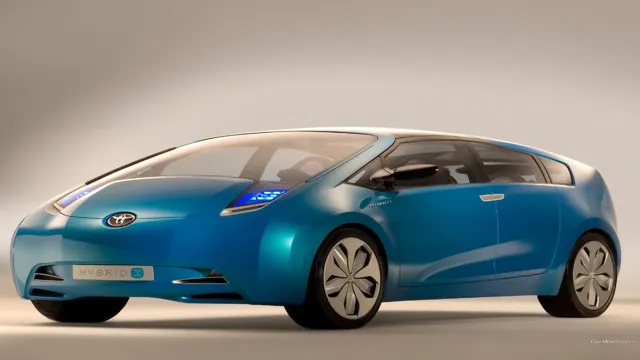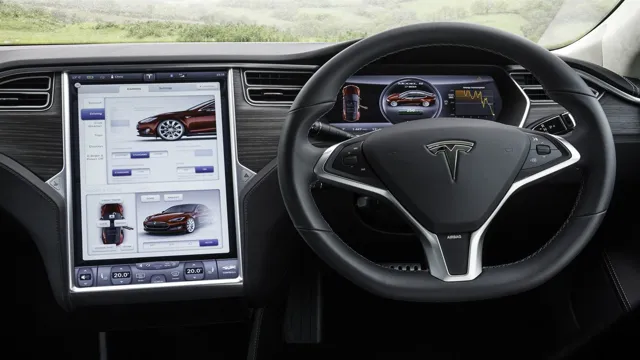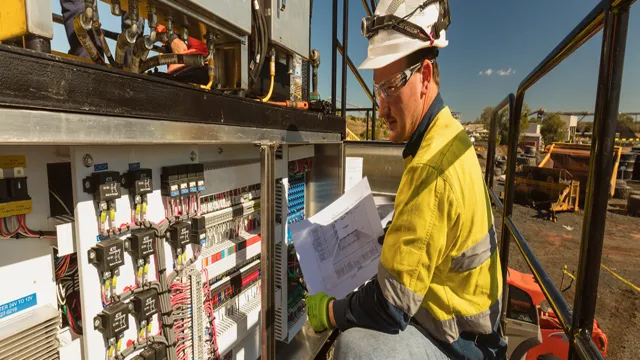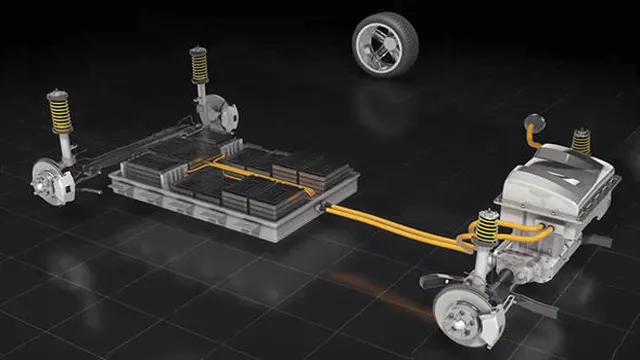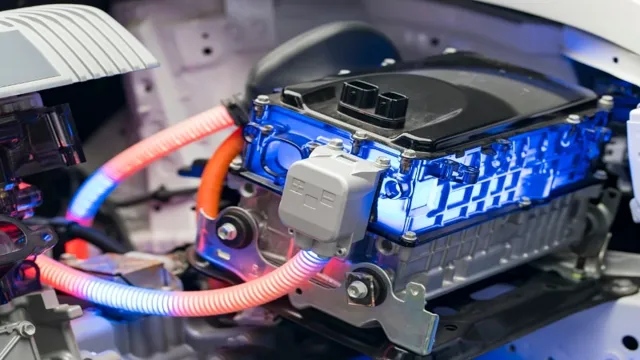Revolutionizing the Road: Exploring the Latest Technology and Innovations in Electric Cars
electric cars have revolutionized the automobile industry, and the latest technology to make these eco-friendly vehicles even more efficient and sustainable is truly impressive. From increased battery life to faster charging times and more efficient motors, the technology on electric cars is constantly evolving, and it’s an exciting time to be a part of this movement. Whether you’re a longtime electric car enthusiast or just starting to explore this new frontier, there’s plenty to discover and appreciate in these cutting-edge vehicles.
So if you’re ready to take a ride on the latest and greatest in electric car technology, keep reading!
Battery Innovations
Recent technology on electric cars has seen several advancements in battery technology. One of these advancements is solid-state batteries, which offer several advantages over traditional lithium-ion batteries, such as higher energy density, longer lifespan, and improved safety. These batteries use a solid electrolyte, rather than the liquid electrolyte used in lithium-ion batteries, which eliminates the risk of leakage and fire, making them safer to use.
Another innovation is the use of graphene batteries, which offer faster charging times and higher capacities. These batteries use graphene, a material that is high in electrical conductivity, to improve their performance. With these battery innovations and many more in the works, electric cars are becoming an increasingly viable alternative to traditional gas-powered vehicles.
Long-Range Batteries
Long-range batteries have become a hot topic these days, especially as electric vehicles (EVs) become more popular. EV owners are looking for batteries that can provide longer travel distances without needing to constantly recharge. Luckily, battery innovations are making this a reality.
One of the most recent breakthroughs has been the development of solid-state batteries, which use a solid electrolyte instead of a liquid one. This enables the batteries to be smaller, lighter, and more efficient. Additionally, advancements in lithium-ion batteries have allowed for higher energy density, meaning more energy can be stored in a smaller space.
With these developments, we can expect to see even more long-range batteries in the market, providing drivers with a better EV experience.
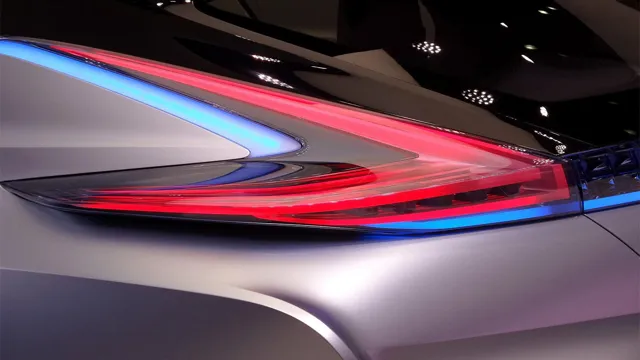
Solid-State Batteries
Recently, there has been a lot of buzz around solid-state batteries, which are seen as the next big thing in battery technology. Contrary to conventional lithium-ion batteries, which use a liquid electrolyte to shuttle ions between the positive and negative electrodes, solid-state batteries use a solid electrolyte. These batteries offer numerous advantages over conventional batteries, including higher energy density, faster charging times, and improved safety.
They are also resistant to leakage, which is a significant concern for lithium-ion batteries. In short, solid-state batteries provide a promising solution to the challenges of battery power, making them ideal for electric vehicles, electronic devices, and other energy-hungry applications. As researchers worldwide work to develop more efficient and cost-effective solid-state batteries, it’s only a matter of time before they become the norm.
Fast Charging Options
With the recent technology on electric cars, people nowadays not only choose an eco-friendly mode of transportation but also an efficient one. One of the benefits of electric vehicles is its convenience in charging. Electric cars can be charged anywhere with an outlet, but fast charging options have emerged, making it even more efficient and practical.
One of the commonly used fast charging options for EVs is the Level 3 fast charger that can provide up to 80% battery life in just 30 minutes. This technology is beneficial for long drives or unexpected situations where the battery is lower than expected. Several companies have also developed wireless charging options, where the car automatically connects to the charger and charges itself once parked.
With the continuous advancement in technology, it is not surprising that more fast charging options for electric cars will emerge, making it even more convenient for people to switch to EVs. Overall, the emergence of these fast charging options is a great milestone in the EV industry, making driving electric vehicles more practical and convenient for everyone.
Superchargers
Superchargers are a fast charging option for electric cars that can provide a quick boost to the battery’s charge. These chargers use a higher voltage than conventional charging methods, allowing for a much faster charging time. With the increasing popularity of electric cars, superchargers are becoming more common, and many companies are investing in their own networks of charging stations.
They are especially useful for long-distance driving, making it possible to recharge quickly and get back on the road. However, it’s important to note that not all electric cars can use superchargers, so it’s important to check with your vehicle manufacturer to see if it’s compatible. Overall, superchargers are a promising solution for electric vehicle charging and will likely continue to grow in popularity as the demand for electric cars increases.
DC Fast Chargers
When it comes to electric vehicles, fast charging options like DC fast chargers are becoming increasingly popular due to their ability to charge the vehicle quickly. DC fast chargers are capable of delivering high amounts of power, allowing your car to charge up to 80% in just 30 minutes. This charging option is particularly useful for those on long trips or who need to quickly top up their vehicle’s battery.
Although DC fast chargers may carry a higher cost per kW compared to other charging options, they are worth considering for their convenience and time-saving benefits. Overall, having access to DC fast charging options can provide peace of mind and make the transition to electric vehicles a more viable and practical option for drivers.
Advanced Motors and Powertrains
Recent technology on electric cars is advancing at a rapid pace, particularly when it comes to motors and powertrains. One of the most promising developments is the use of permanent magnet motors, which provide better performance and efficiency than traditional induction motors. Additionally, advancements in power electronics and battery management systems are allowing for more precise control and optimization of electric drivetrains.
And when it comes to powertrains, dual-motor systems are becoming increasingly common, offering not only improved acceleration and handling but also greater energy efficiency. These innovations are helping to make electric cars more viable alternatives to gas-powered vehicles, and the progress being made is truly exciting to see.
Permanent Magnet Motors
Permanent magnet motors are becoming increasingly popular due to their efficiency and reliability. These motors use permanent magnets to create a magnetic field, eliminating the need for a separate field winding. This makes them simpler and more compact than traditional motors, while also reducing the risk of mechanical failures.
Additionally, permanent magnet motors offer higher power densities, allowing for smaller, lighter, and more efficient powertrains in electric vehicles and other applications. With advancements in technology, permanent magnet motors are becoming more affordable and practical, making them a promising option for the future of advanced motors and powertrains. Overall, these motors offer a compelling solution for improving energy efficiency and reducing dependence on fossil fuels, while also providing a smooth and reliable driving experience for consumers.
Two-Speed Transmissions
Two-speed transmissions are an important aspect of advanced motors and powertrains. They allow for greater control over a vehicle’s speed and acceleration, making them particularly useful in high-performance applications. One of the key benefits of a two-speed transmission is the ability to switch between low and high gears, which can greatly improve acceleration and top speed.
This is accomplished by having two different gear ratios, which are designed for specific driving situations. For example, low gears may be used for steep inclines or off-road driving, while high gears are better suited for smooth, open roads. Overall, two-speed transmissions offer a powerful upgrade for any vehicle, providing greater control and improved performance on the road.
Autonomous Driving Features
When it comes to recent technology on electric cars, one of the most exciting developments is undoubtedly the advances in autonomous driving features. These systems use a variety of sensors, cameras, and algorithms to allow vehicles to drive themselves safely and efficiently. Some of the most impressive features include adaptive cruise control, lane departure warning, and automatic emergency braking.
These not only make driving easier and more pleasant, but also enhance safety on the roads by reducing the risk of accidents caused by human error. Plus, they can help to improve fuel efficiency and reduce emissions by optimizing speed and minimizing unnecessary acceleration and braking. As electric cars continue to gain in popularity, it’s likely that we’ll see more and more of these autonomous features becoming standard.
And who knows, in the not too distant future, we may even have fully self-driving cars that can transport us around without any input from us at all!
Self-Driving Capabilities
Self-driving capabilities have progressed significantly over the past few years, making it possible for vehicles to drive themselves under certain conditions. Autonomous driving features are now available in many vehicles, ranging from lane departure warnings to adaptive cruise control, which maintains a safe distance from the vehicle in front. Some vehicles can even park themselves and navigate through heavy traffic, reducing the driver’s workload.
Self-driving cars use advanced technologies like radars, cameras, and LIDAR sensors to monitor their surroundings and make driving decisions. While fully autonomous vehicles are still in development, current autonomous driving features provide a glimpse into the future of transportation. As innovation continues in this space, it’s exciting to imagine the possibilities of safer, more efficient, and stress-free driving.
Advanced Safety Features
Advanced Safety Features For Autonomous Driving Driving can be an enjoyable experience, but it can also be dangerous if safety is not a top priority. That’s why many car manufacturers have been working tirelessly to develop advanced safety features to keep drivers and passengers safe while on the road. One of the latest advancements in automotive safety technology is autonomous driving.
With features like lane departure warning systems, automatic emergency braking, adaptive cruise control, and self-parking capabilities, autonomous vehicles offer a safer and more convenient driving experience. Autonomous driving technology utilizes a combination of sensors, cameras, and artificial intelligence, which enables vehicles to navigate the roads without human intervention. This technology is still in its early stages, but it has the potential to revolutionize the automotive industry and improve road safety significantly.
Conclusion
In conclusion, recent advancements in electric car technology have given us a glimpse of a sustainable transportation future that is both efficient and environmentally friendly. With the development of longer lasting batteries, faster charging speeds, and smart driving systems, electric cars have become a viable option for everyday commuters and road trippers alike. As we continue to push for a lower carbon footprint, the electric car market will undoubtedly evolve and transform into something even more impressive.
Just imagine, soon we may actually look forward to refueling our cars just as much as we do our smartphones!”
FAQs
What is the latest technology used in electric cars?
The latest technology used in electric cars includes regenerative braking, fast charging capabilities, and advanced battery management systems.
How does regenerative braking work in an electric car?
Regenerative braking is a technology that allows electric cars to capture energy normally lost during braking, converting it into electricity and storing it in the battery for later use.
What is the average range of an electric car on a single charge?
The average range of an electric car on a single charge varies depending on the make and model, but ranges between 100-300 miles on a single charge.
Are there any downsides to owning an electric car?
While electric cars have many benefits, one downside is the need to frequently charge the battery, which can limit range for longer journeys or in areas with limited charging infrastructure.
